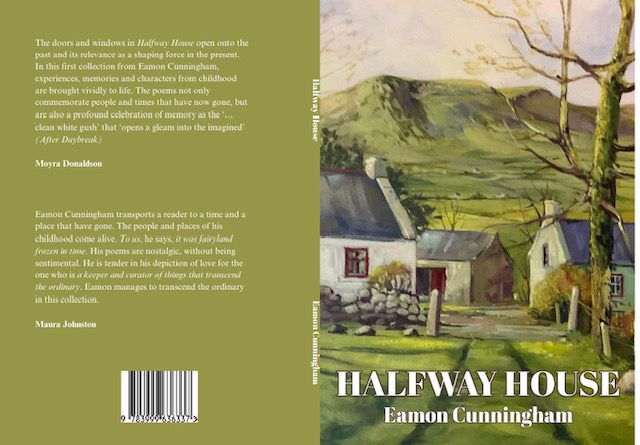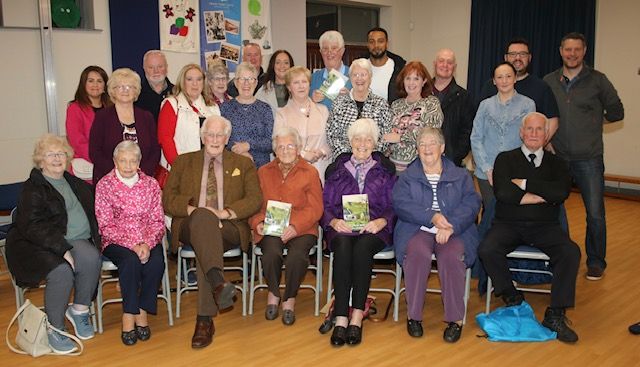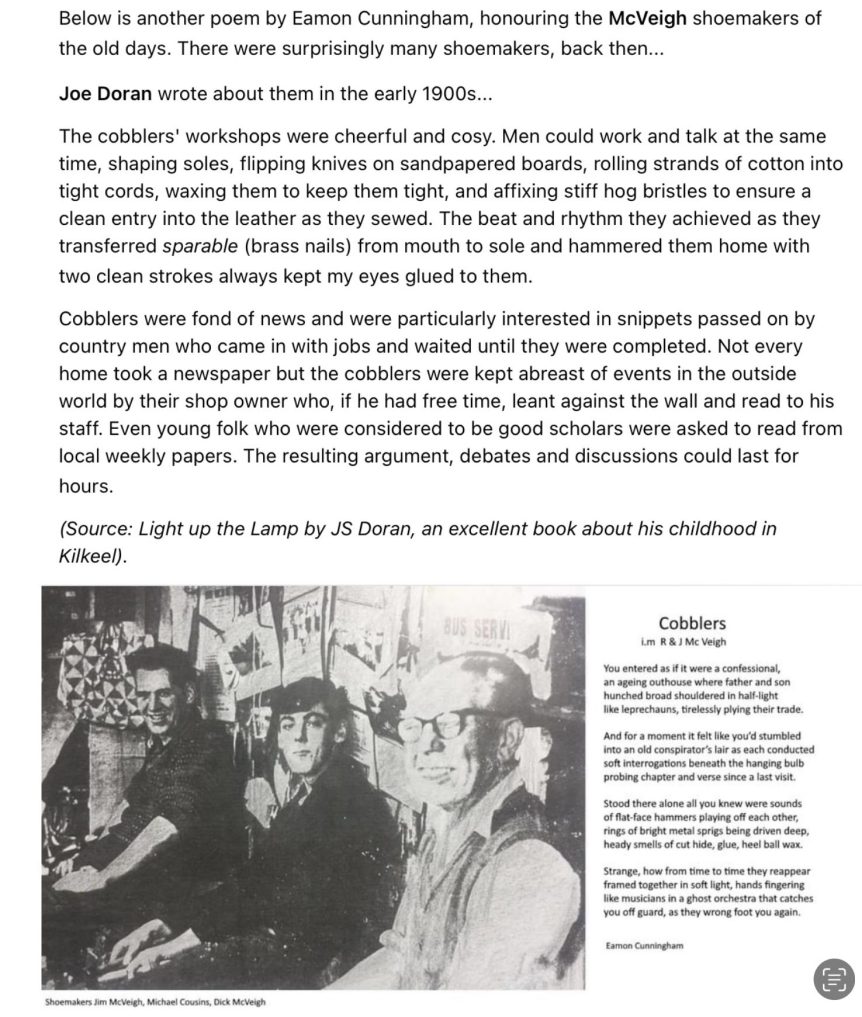“Halfway Houses”. Why was this phrase chosen as the title? I’ve been intrigued with places named as halfway houses. One seen as a public house outside the village of Annalong on the road home to Kilkeel on those very occasional bus journey to and fro from Newcastle, always seemed to signal to travellers that they could now judge their journey to be half complete. It registered as a marker or milestone between departure and what still lies ahead, in the enterprise.
Just like Heaney’s “Stepping Stones”, I consider we all encounter halfway houses, spaces on our travels, not necessary physical stopping off places but perhaps stages in personal development, where we halt and assess achievement, and plot a course towards fulfilment. So, in some ways these isolated homesteads on the cover might represent staging posts for those families, who for many like my own moved through landscapes of childhood and onto other destinations away from the home place. However, my brother’s picture for me just seemed to have the right accord with the content and resonates especially the number of memory pieces celebrating people and places like the Drover, or the Pound field, sadly no longer part of rural activity, or tapestry. More importantly its inclusion is honouring his memory and artistry and I’m privileged to be able through my work share his talents and his untimely passing with my audience.

Concerning talents or notions that academic privilege attaches solely to certain curricula disciplines may often have been the past norm in teaching. However, I’ve never felt contained, constrained or labelled. I was gifted with good practical skills from an early age and saw my future employment in terms of utilising those skills, but never thought it would be within a classroom. My motto, ‘you are who you want to be’, and that attitude has fuelled my personal and academic advancement over a long career in teaching and in school management.
In a way writing, and Carson would often insist that you don’t describe yourself as a poet, rather you are a writer, is a conscious way of acknowledging those things that shaped you. The big influencers, parents, family, school, the church, politics of loyalty and ownership, the friends, the picture houses, the Vogue and the Mourne, and landscapes of the Kingdom, especially the harbour, and those men, and another school friend who lost their lives to the sea. Many of my contemporaries lived within this geography, our place on land or sea, but perhaps because I moved away, I’ve locked in the incidents and images that remain important to framing my own story and those of my ancestors.
My Grandfather Daniel from Ballymaderphy who harvested wrack on Millbay left with many other men from the town to work in the copper mines in Butte Montana, joined the Canadian Expeditionary Force WW1, died in a military hospital in Vancouver, and is buried in Forest Lawn Cemetery. I remember him and my father in my writing and the pain and isolation that comes from immigration and lifetimes of separation.
Many families from the town could share in this story, logging it in word is my way of preserving our own history. In a way it is like laying down the seeds of memory to germinate and take root for others to encounter.
With the guidance and support I have over recent months assembled a range of contrasting pieces for a first collection, in part to honour the memory of my youngest brother who died suddenly in Canada. Then during Covid lockdown my wife and I bunkered down in a cottage in Donegal the perfect hideaway to reflect and write. Carrickfinn generated its own particular blend of emotional pieces linked to isolation, but also acknowledges the utter dependence most of us have on family friendships and sociability. I will leave such Carrickfinn Sonnets and other lockdown pieces to sinter for a little longer, before their possible inclusion in a future collection.


